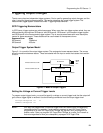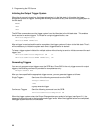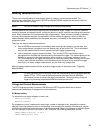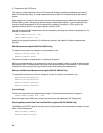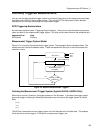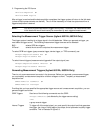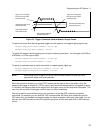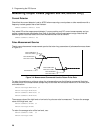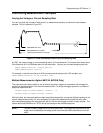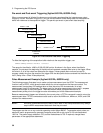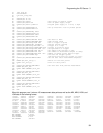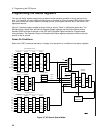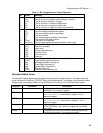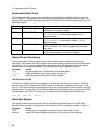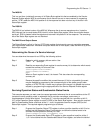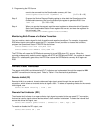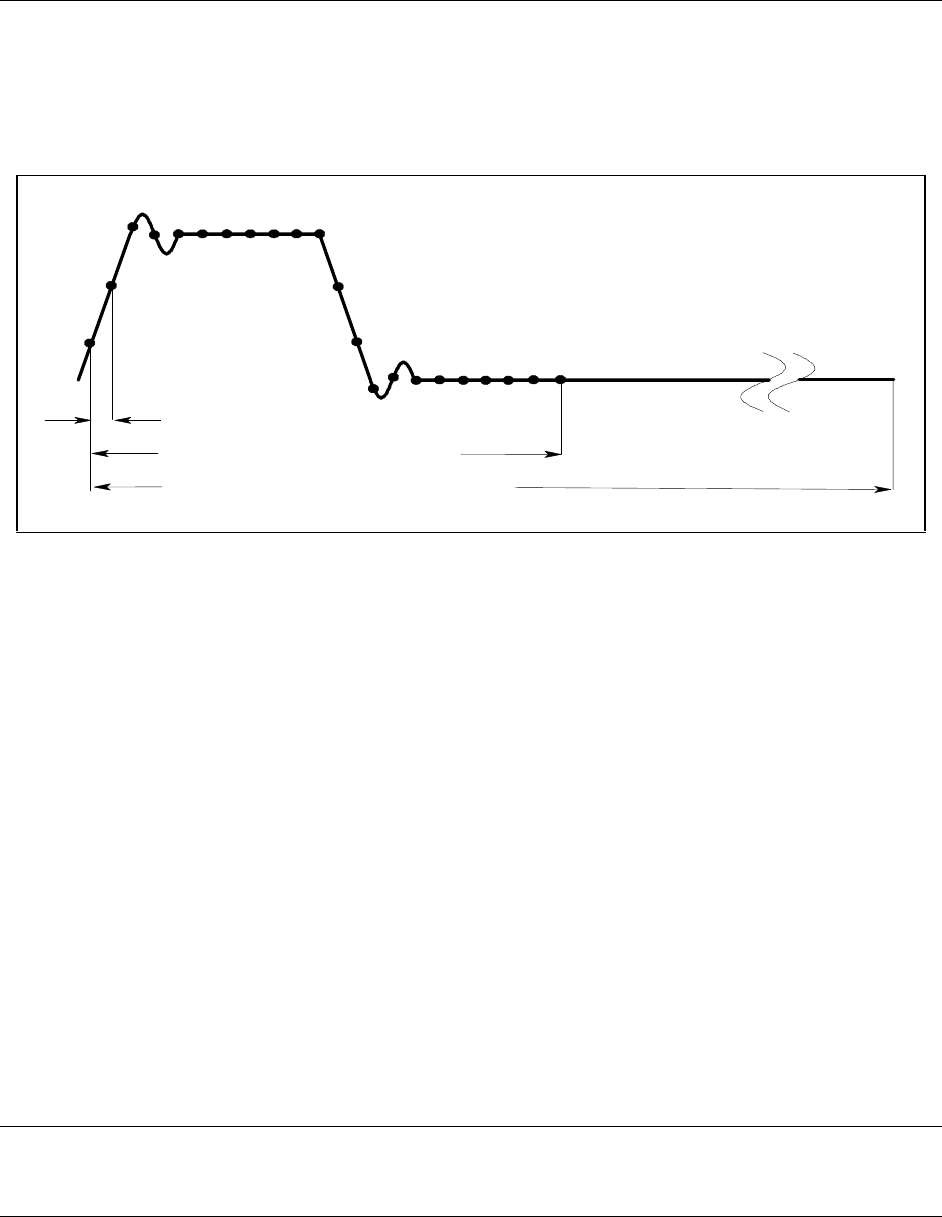
Programming the DC Source - 3
29
Controlling Measurement Samples
Varying the Voltage or Current Sampling Rate
You can vary both the number of data points in a measurement sample, as well as the time between
samples. This is illustrated in Figure 3-5.
SENS:SWE:POIN
<
#of
p
oints
>
SENS:SWE:TINT <time>
TRIG:ACQ:COUN:CURR
<
#ofswee
p
s
>
Figure 3-5. Sense Commands Used to Vary the Sampling Rate
At *RST, the output voltage or current sampling rate is 15.6 microseconds. This means that it takes about
32 milliseconds to fill up 2048 data points in the data buffer. You can vary this data sampling rate with:
SENSe:SWEep:TINTerval <sample_period>
SENSe:SWEep:POINts <points>
For example, to set the time interval to 46.8 microseconds per sample with 1500 samples, use
SENSe:SWEep:TINTerval 46.8E-6;POINts 1500.
Multiple Measurements (Agilent 66312A, 66332A Only)
The instrument also has the ability to set up several acquisition triggers in succession and average the
results from each acquisition in the returned measurement. To set up the trigger system for a number of
sequential aquisitions use:
TRIGger:ACQuire:COUNt:CURRent <number> or
TRIGger:ACQuire:COUNt:VOLTage <number>
With this setup, the instrument performs each acquisition sequentially, storing the digitized readings in the
internal measurement buffer. It is only necessary to initialize the measurement once at the start; after
each completed aquisition the instrument will wait for the next valid trigger condition to start another. The
results returned by MEASure or FETCh will be the average of the total data acquired.
NOTE: The total number of data points cannot exceed 4096. This means that the product of the
trigger count multiplied by the sweep points cannot exceed 4096; otherwise an error will
occur.



